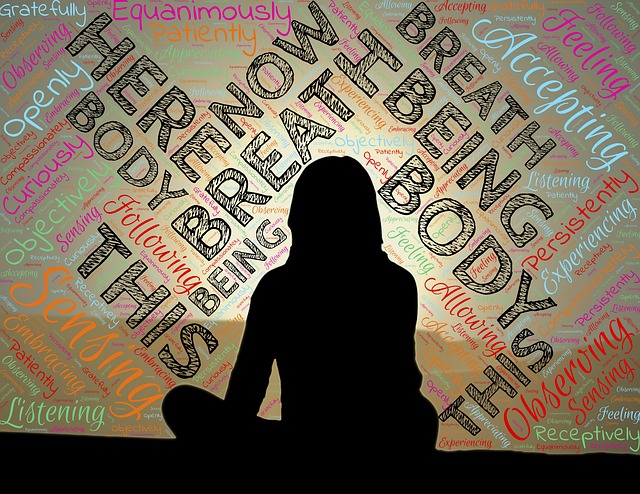Bob Stahl, co-author of Mindfulness-Based Stress Reduction Workbook for Anxiety, provides a 30 -minute meditation for facing fear and anxiety that I will discuss in this post. Bob is a Master Mindfulness Teacher who has developed multiple MBSR programs for hospitals and members of the medical professions. He is active on multiple fronts – author, developer of the Mindfulness Training Institute, and a professional educator and innovator with the Center for Mindfulness in Medicine, Health Care, and Society at the University of Massachusetts Medical School.
How meditation and mindfulness can help to reduce anxiety
Mindfulness can calm feelings of anxiety because it enables you to face fear and anxiety in all their intensity (rather than attempt avoidance which is harmful); it assists you to access the well of ease within you; and “creates space around your anxieties” so that you are not exhausted and totally consumed by their pervasiveness and relentlessness.
Our anxieties deepen when we indulge in harmful self-stories and thoughts about what might happen which typically involve “fearing the worst”. These stories and thoughts can overwhelm us and take our focus away from the present moment and effective, mindful living. The feelings of fear and anxiety can be experienced as a whirlpool with the sensation of being caught in an ever-deepening vortex of water – drowning in the whirling immersion.
Mindfulness and meditation can still the whirlpool of emotions, thoughts and bodily sensations; calm the mind and body; and open the way for creative exploration of options to address the presenting issues or catalyst for the anxiety and fear.
A meditation for facing fear and anxiety
At the heart of the anxiety meditation offered by Bob (Practice #2) is a body scan that not only opens awareness of what you are sensing in your body but also awareness of your debilitating thoughts and the full range and depth of emotions you are experiencing (which we often deny or avoid because they are too painful).
Bob proceeds through a series of steps that I will summarise below (however, I encourage you to undertake the anxiety meditation by listening to Bob):
- 1. Congratulate yourself for taking the time and effort to undertake this meditation and to experience the vulnerability it entails.
- 2.Undertake a preliminary check-in to sense how you are feeling, thinking and experiencing bodily sensations. Reinforce your intention to face your fear and anxiety.
- 3.Bring your attention to your breath gently – focusing on the rise and fall of your stomach as you breathe in and out. Just breathe naturally without force to enable the calming influence of your breath to take over from the controlling influence of your thoughts and feelings.
- 4.Shifting your focus to a body scan – the scan that Bob offers is very comprehensive, starting with your feet and ankles and working slowly through your whole body to the top of your head. What adds to the power of this body scan is Bob’s way of linking each part of the body to its place in the body’s systems, e.g. your heart and circulatory system, your lungs and respiratory system.
- 5.Accept what happens as you “breathe into your whole body” – if there is tension or tightness, let it be,; if your body releases the tension, let that softening sensation be; or if thoughts and/or feelings arise, let them be. Just stay with your breath, notice what is happening and let go – an act of trust in the process.
- 6. Explore thoughts that generate fear or anxiety with compassionate curiosity – investigate gently their underlying causes and acknowledge this influence without trying to over-analyse.
- 7.Extend compassion to your feelings – let them be to the level of intensity that you can handle. Sometimes, this may mean just “wading into the water” of your anxiety.
- 8. Become grounded in your breath again – withdraw from the compassionate inquiry to rest in the natural flow of your breathing. You might find it useful to undertake this grounding at various stages throughout the meditation to lower the intensity of your thoughts/feelings.
- 9. Notice your thoughts – observe the ever-changing character of your thoughts and how they come and go. Bob suggests you view them as “the clouds in the sky” passing by, rarely stopping as they are carried along by the breeze or wind. See whatever happens as just “floating by”.
- 10. Think of others who may be experiencing fear and anxiety – extend your wellness wishes to them in the hope that they too will become free.
As we grow in mindfulness through this anxiety meditation, we become better able to accept what is, experience our bodily sensations and feelings, break free of the stranglehold of our anxious thoughts and experience once again the ease of well-being. Bob suggests that we view this anxiety meditation as an “internal weather report” and congratulate ourselves for being able to “acclimate ourselves to our fears”.
____________________________________________
Image by Gianni Crestani from Pixabay
By Ron Passfield – Copyright (Creative Commons license, Attribution–Non Commercial–No Derivatives)
Disclosure: If you purchase a product through this site, I may earn a commission which will help to pay for the site, the associated Meetup group and the resources to support the blog.


